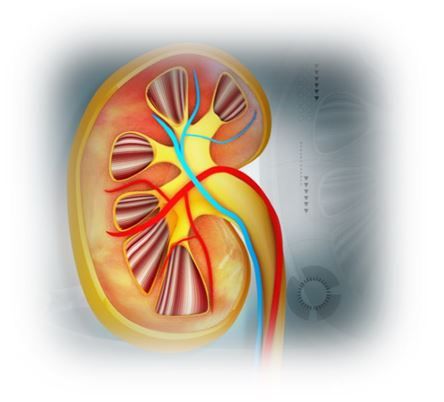US Albuminuria Testing Far Below Levels Essential for Effective CKD Treatment
©ramcreations/Shutterstock.com

Nearly two-thirds (64.8%) of US adults with hypertension or type 2 diabetes who have albuminuria go undetected according to a new study that identifies widespread underutilization of testing as the cause.
Study investigators further estimated the association between urine albumin-creatinine ratio (UACR) testing and treatment of chronic kidney disease (CKD) and found lack of testing associated with significantly lower odds of receiving guideline-recommended cardiovascular and renal pharmacotherapy.
Using National Health and Nutrition Examination Surveys (NHANES) and Optum deidentified EHR data, the research team, led by Michelle Estrella, MD, MHS, executive director of the Kidney Health Research Collaborative at the University of California San Francisco, estimated that 17.5% of a combined cohort of more than 192 000 participants received UACR testing and that just 35.2% of those who did have albuminuria were tested.
“Given the crucial role of albuminuria for risk stratification and determining indicated treatments in CKD our results reinforce the need for concerted efforts to increase the use of albuminuria testing for enhanced kidney and cardiovascular preventive care,” investigators said.
The authors wrote in JAMA Network Open that estimated glomerular filtration rate (eGFR) testing is approximately 90% among people with T2D or hypertension but that the wide underutilization of UACR assessment in both populations, “is well described.” And even though annual albuminuria testing for persons with T2D has long been a guideline recommendation, investigators cite data showing that actual testing rates have hovered at just 50% or lower across clinical settings. The scenario for adults with hypertension alone is worse, they add, with testing for albuminuria at approximately 10%.
“Given the crucial role of albuminuria for risk stratification and determining indicated treatments in CKD our results reinforce the need for concerted efforts to increase the use of albuminuria testing for enhanced kidney and cardiovascular preventive care,” investigators said.
Estrella and colleagues aimed to estimate the extent of albuminuria underdetection in US clinical health systems and then to evaluate whether UACR testing was associated with odds of receiving evidence-based therapy to reduce risk of CKD progression or complications.
The investigators used data from NHANES (2007 to 2018) and the Optum deidentified electronic health record (EHR) data set for adults with T2D or hypertension. After developing a logistic regression model to estimate albuminuria (UACR ≥30 mg/g) for the cohort, they applied the model to active outpatients in the Optum EHR from January 1, 2017, to December 31, 2018.
The primary outcome of interest was the estimated total prevalence of albuminuria among those who had and who had not been tested within the EHR cohort.
Investigators then turned to an examination of associations between having albuminuria testing and use of CKD therapies in the participants with at least 12 months of follow-up after the index date. Using multivariable logistic regression, they evaluated associations between UACR testing and ACE inhibitor or ARB treatment, sodium-glucose cotransporter 2 (SGLT2) inhibitor treatment, and blood pressure control meeting the CKD guideline-recommended level of <130/80 mm Hg or slightly higher, at <140/90 mm Hg, on the latest outpatient measure.
FINDINGS
There were 192 108 individuals included from the Optum EHR database who had a mean age of 60 years. Of them, 96.6% (185 589) had hypertension, 26.2% (50 507) had T2D ,and the mean eGFR was 84 mL/min/1.73m2.
Among the cohort, 17.5% (33 629) underwent UACR testing, with confirmed albuminuria reported in 34.3% (11 525). UACR testing, the team pointed out was significantly more common among participants with T2D only (52.3%) than those with only hypertension (5.1%).

Estrella et al calculated the true prevalence of albuminuria among participants who were tested to be 34% and estimated the prevalence as 13.4% of participants who were not tested. Based on these data, the researchers estimated that just slightly more than one-third (35.2%) of the projected population with albuminuria had been tested for the marker.
After multivariable adjusted analyses, investigators found that having received albuminuria testing vs not having testing was associated with an increased likelihood (presented as adjusted odds ratio [aOR]) of having received guideline-recommended treatment to treat CKD progression, as follows:
- Approximately 2.4-fold odds of receiving ACEi or ARB treatment (aOR, 2.39; 95% CI, 2.32-2.46)
- 8.2-fold odds of receiving SGLT2i therapy (aOR, 8.22; 95% CI, 7.56-8.94)
- 1.2-fold odds of BP control to <140/90 mm Hg (aOR, 1.20; 95% CI, 1.16-1.23)
The authors point out several limitations to the study including the need to use estimated albuminuria as the basis for prevalence and detection rates; absence of data from alternative measures (eg, 24h urine albumin/protein quantification, dipstick protein); and the inability to assess the effects of behavioral interventions shown to reduce albuminuria (eg, smoking cessation, weight loss).
“Early identification of albuminuria is increasingly crucial given the growing number of therapies, such as [SGLT2 inhibitors] and nonsteroidal mineralocorticoid antagonists that have been shown to slow the progression of CKD and prevent cardiovascular complications," investigators wrote. "More albuminuria testing is clearly needed among at-risk persons to ensure effective dissemination of these therapies and to fully realize their potential benefit.”
Source: Chu CD, Xia F, Du Y, et al. Estimated prevalence and testing for albuminuria in US adults as risk for chronic kidney disease. JAMA Netw Open. 2023;6(7):e2326230. doi:10.1001/jamanetworkopen.2023.26230